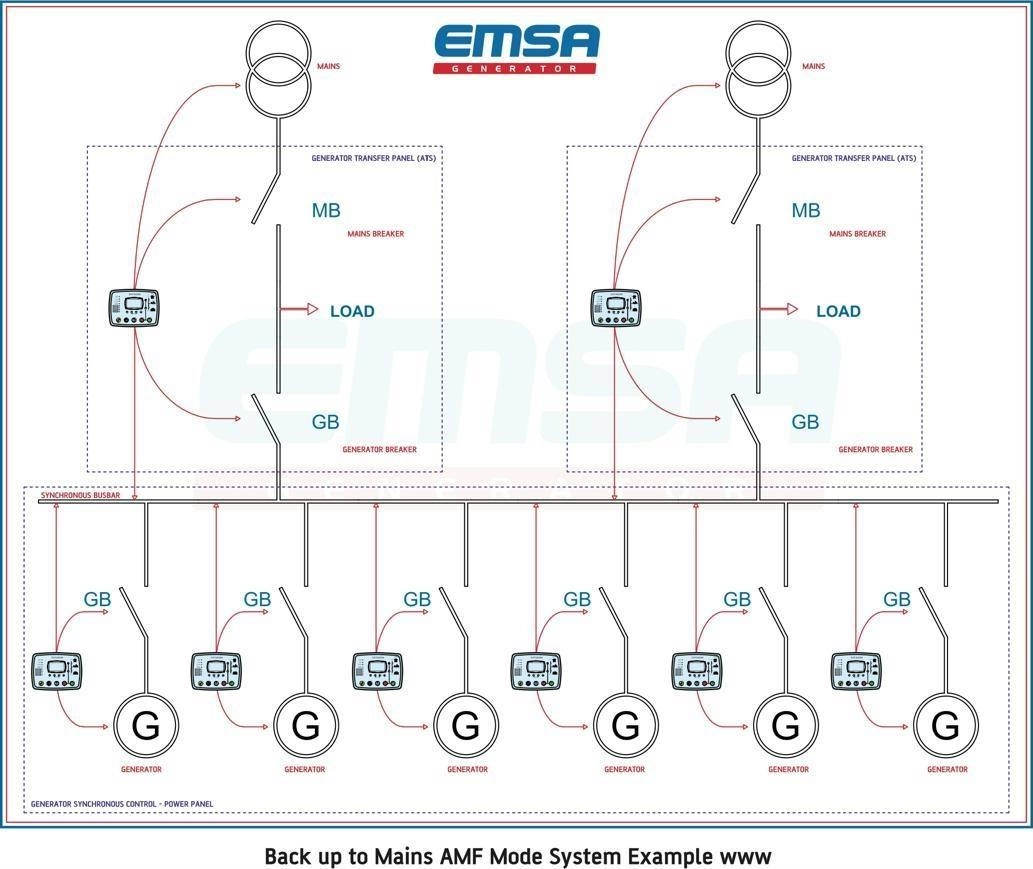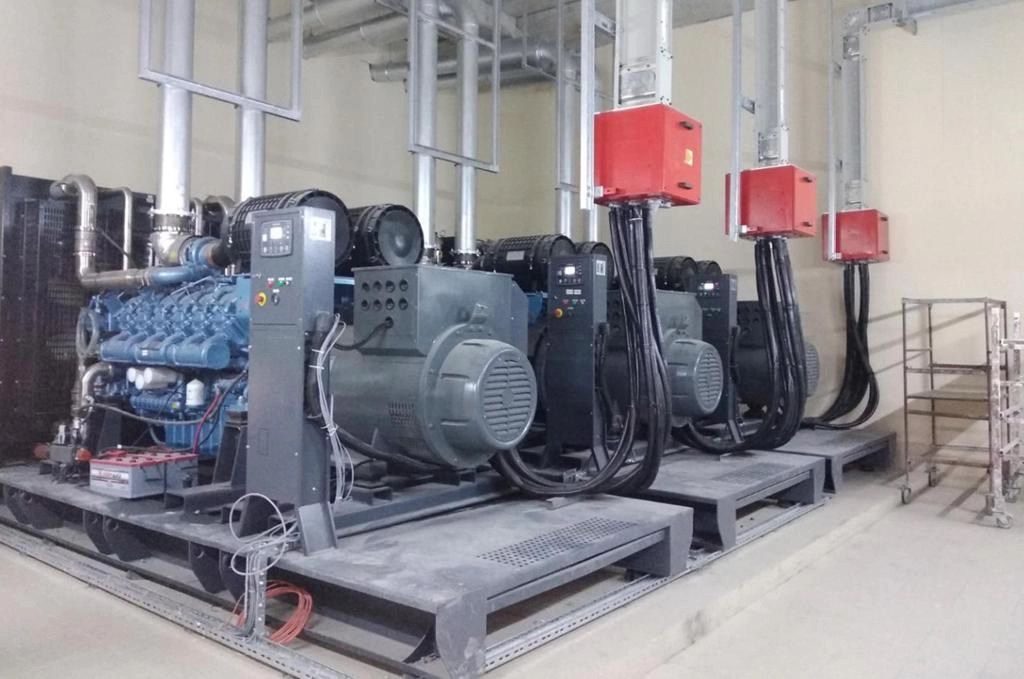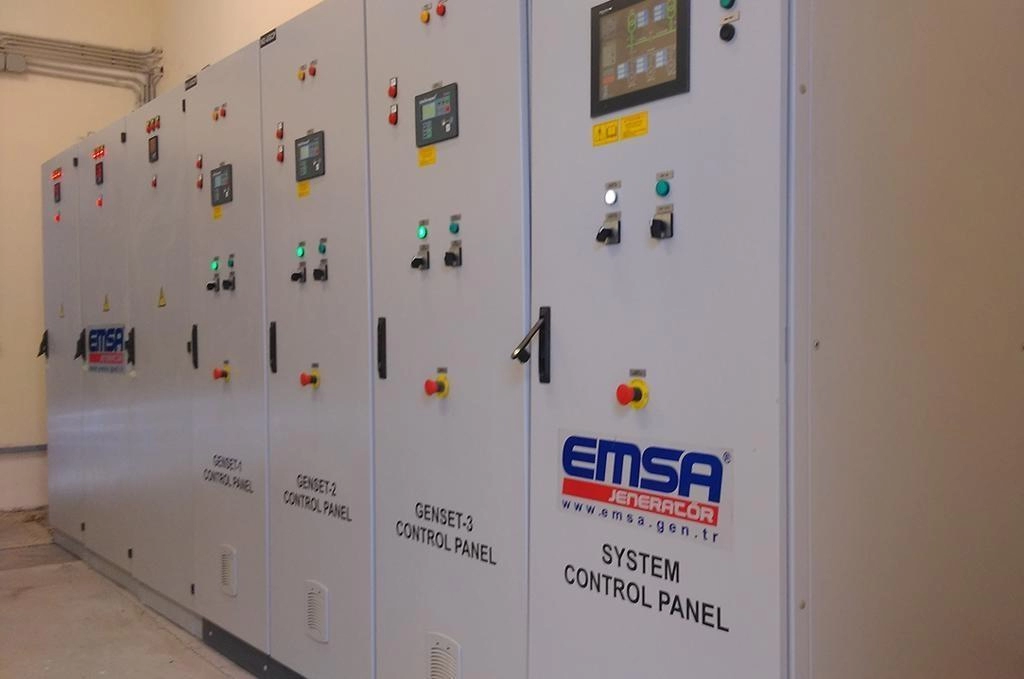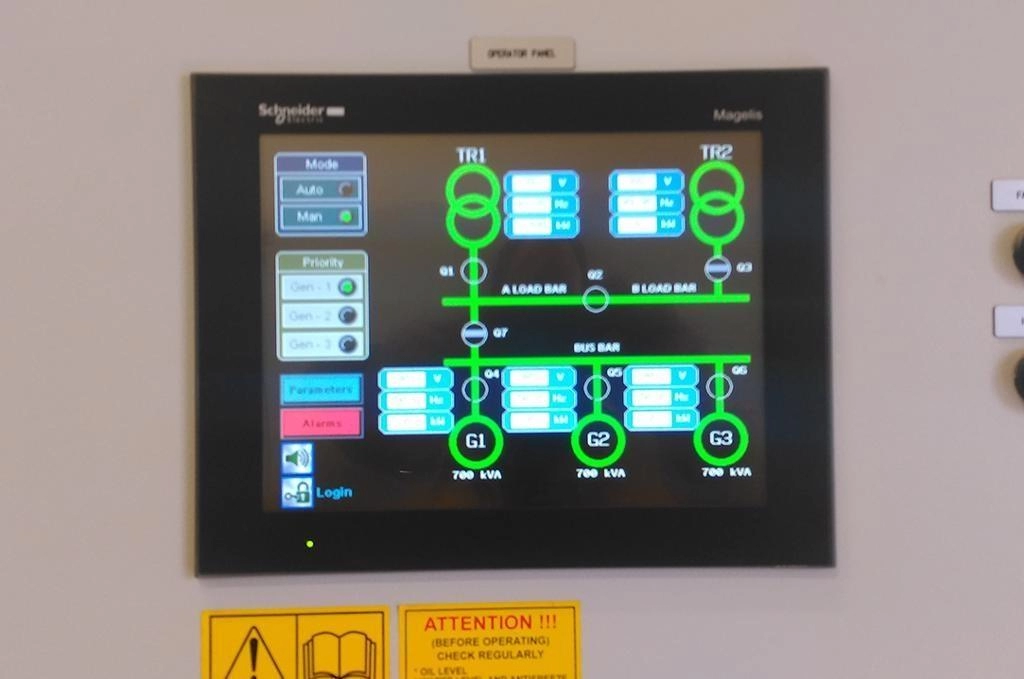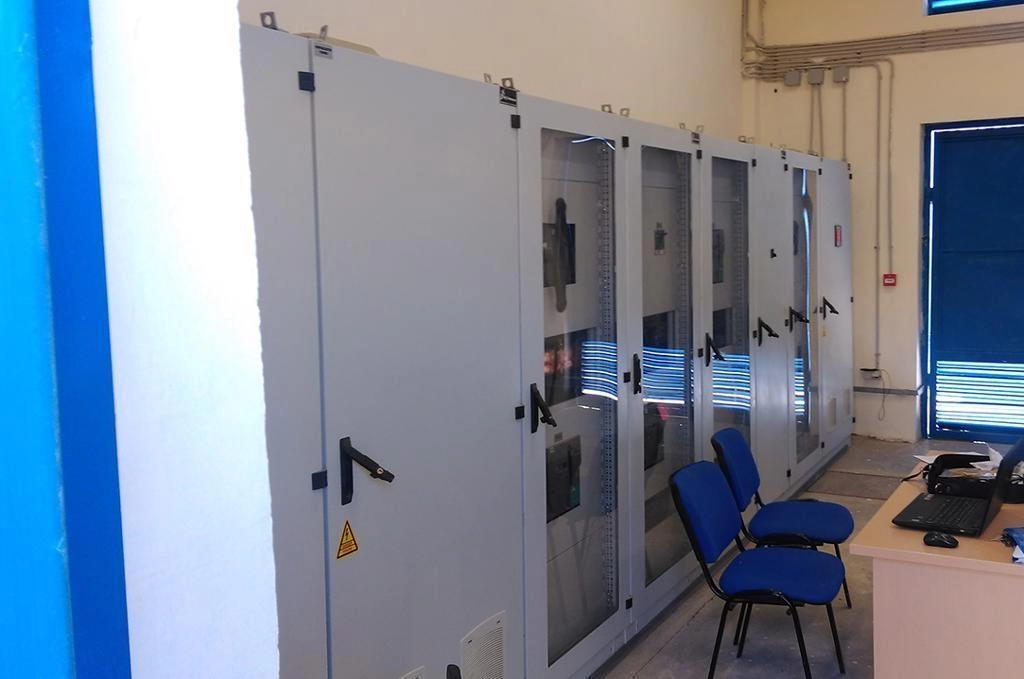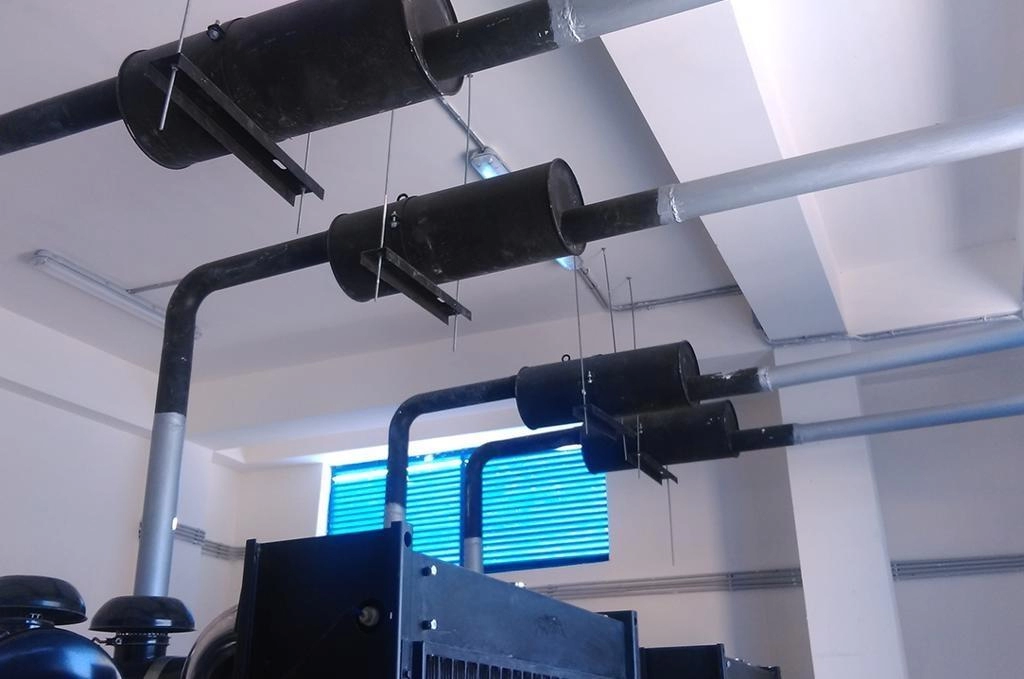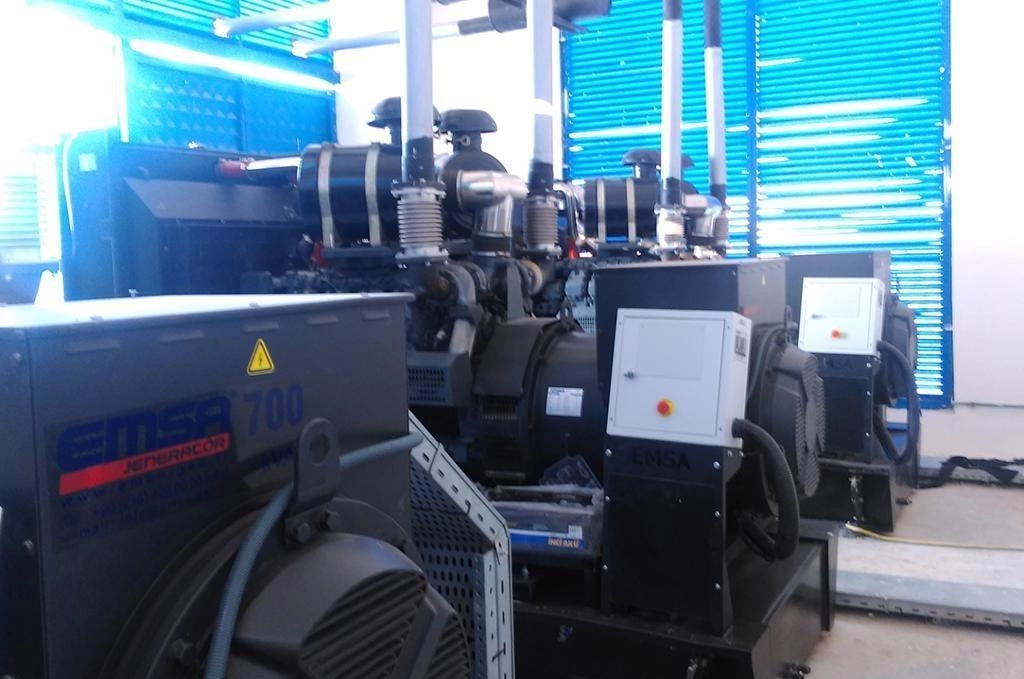The EMSA GENERATOR Research and Development group is working on special projects that provide significant benefits to customers. They address the challenges of a lack of high-powered diesel engines in the market and high costs. Through multi-generator synchronization systems, users can avoid high costs and dependency on a single generator. Our expert staff develop and implement projects based on the specific needs and requirements of our clients.
WHAT IS SYNCHRONIZATION?
Synchronization is the process of matching the frequency and voltage of an electrical group (like a generator) with that of another source (like the grid), by adjusting the former's frequency and voltage in real-time.
WHAT IS PARALLEL OPERATION?
After generators of varying or equal power are synchronized, their simultaneous supply to the load is called parallel operation. Parallel operation not only allows for increased installed power by combining the capacities of multiple generators, but it also is preferred due to the many advantages of using multiple smaller generators over a single large one.
WHAT IS LOAD SHARING?
Load sharing refers to the distribution of active and reactive load between generators working in parallel, proportionate to their power capacities.
WHAT IS SOFT TRANSFER?
In the soft transfer method, the load is gradually shifted between two sources over a predetermined period. At the end of the load transfer, the switch of the source that is now unloaded opens. The biggest advantage of this method is the extension of the lifespan of switching components, as they operate without load and arc.
WHY CHOOSE PARALLEL OPERATION?
COST; Due to the widespread use of diesel engines in both generators and heavy machinery like trucks, mass production at these power ranges has led to reduced engine costs. Using multiple smaller engines can be more cost-effective than using a single high-powered engine, which is often custom-made and has longer lead times.
Aside from initial setup costs, parallel systems also offer advantages in terms of delivery time, operation, maintenance, and spare parts.
RELIABILITY; In parallel systems, if one generator fails for some reason, the remaining generators continue to supply emergency loads. This is not possible in a single-generator system.
FLEXIBILITY; In parallel systems, the power levels of the generators can be equal or different based on field conditions and load. This allows for fuel-efficient operation and reduced wear and tear, as smaller generators can be used when the load is low, and additional generators can be added as demand increases.
Another advantage of parallel systems is that they are easier to move, place, and install in areas with physical constraints or difficulties.
SERVICE & MAINTENANCE; In parallel systems, equal operation times for generators extend the system’s operational life and reduce maintenance costs. A generator in need of maintenance can easily be stopped and serviced without disrupting the system's continuity, as other generators continue to supply emergency loads.
GENERATOR CONTROL UNITS
Generators consist mainly of a diesel engine and an alternator. Control units oversee and monitor these components to ensure optimal and safe operation.
GOVERNOR
The governor is the key element that maintains the diesel engine at a constant speed. In synchronized systems, remotely controllable electronic types are commonly used.
AVR
The AVR (Automatic Voltage Regulator) is an electronic component that maintains the electricity output from the alternator at a consistent level. Remotely controllable versions are used in synchronous systems.
SYNCHRONOUS CONTROL DEVICES
These devices perform standard generator control functions while also managing the GOVERNOR and AVR components to enable synchronization with other power sources.
EMSA GENERATOR SYNCHRONOUS SYSTEM SOLUTIONS
EMSA Generator offers solutions ranging from basic grid-to-generator and generator-to-generator parallel operations to advanced power plant projects. It provides full-scale energy automation design, manufacturing, and commissioning services, supported by PLC, HMI, and SCADA components.
Island Mode Operation
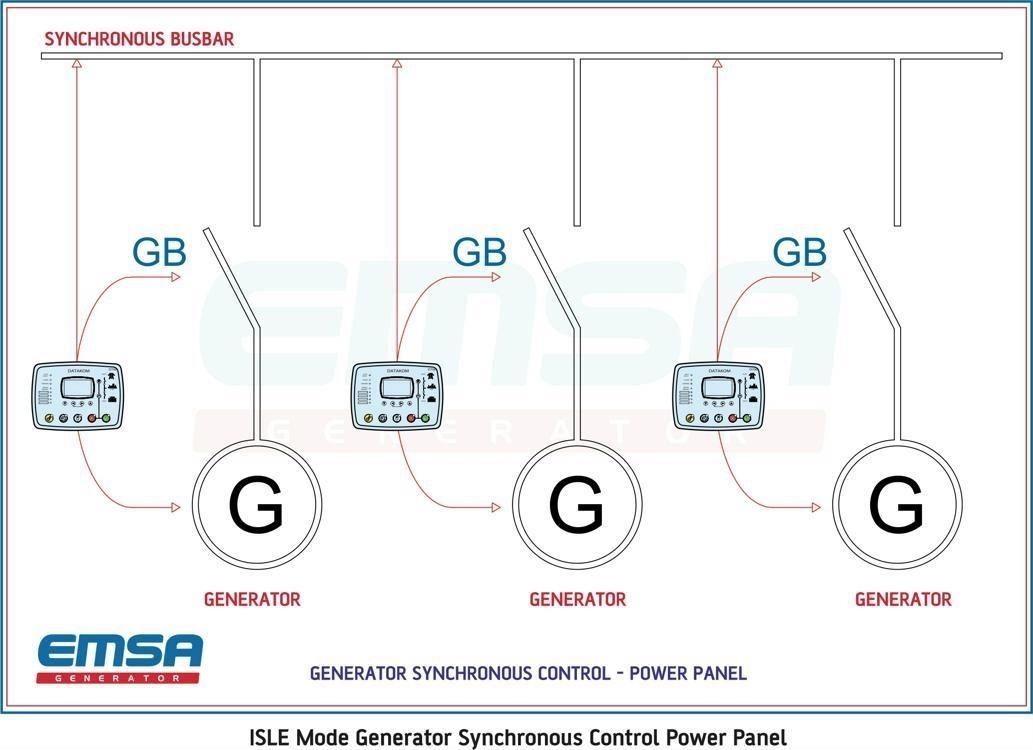
In Island Mode, the system doesn't automatically follow a grid source or make decisions about generator operations. It waits for a remote start signal provided by the customer. Upon receiving this signal, the generators start, synchronize with their busbars, and supply the load if present. Another way this mode operates is by manual intervention from an operator to supply the load.
This mode is preferred for off-grid scenarios like open fields or construction sites.
It is also suitable for situations where customers want to control the generator's run time and already have an ATS (Automatic Transfer Switch) system installed.
Grid-Backed Operation - AMF Mode - Seamless Transition
In AMF mode, the system monitors a grid source. When grid power becomes unavailable, it automatically starts the generators to supply the load.
As soon as grid power returns to a usable level, the generators synchronize with it, supplying the load in parallel for a while before transitioning it smoothly back to the grid. The generators then disengage and await the next grid failure.
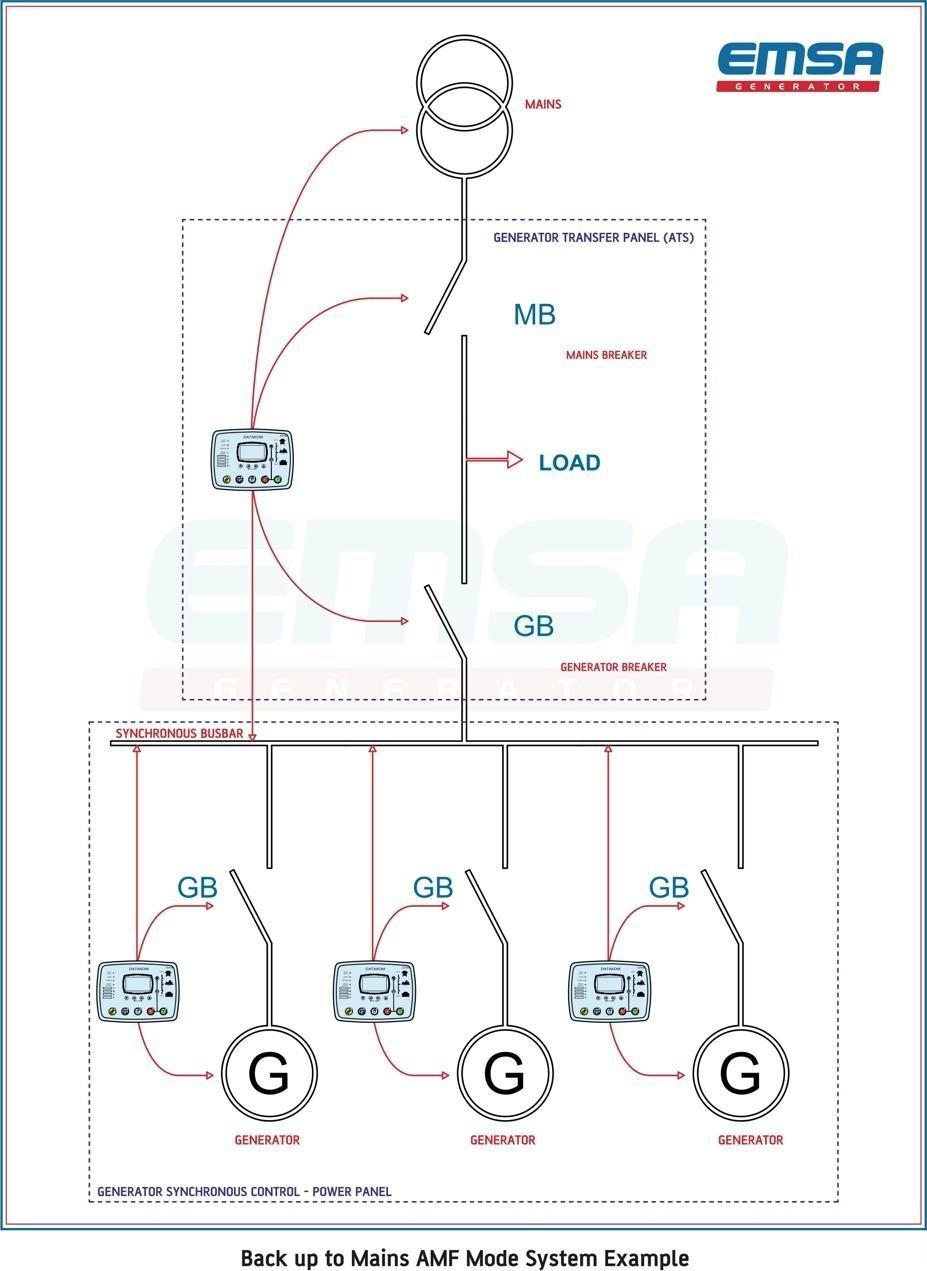
Grid-Backed Operation - AMF Mode - Brief Interruptions
Similar to the seamless version, in this AMF mode the system also follows a grid source. If grid power becomes unavailable, the generators start automatically to supply the load.
When grid power is restored, the generators are disconnected from the load, and the grid circuit is closed. The load is then supplied by grid power. The generators stop after cooling down, waiting for the next grid failure.
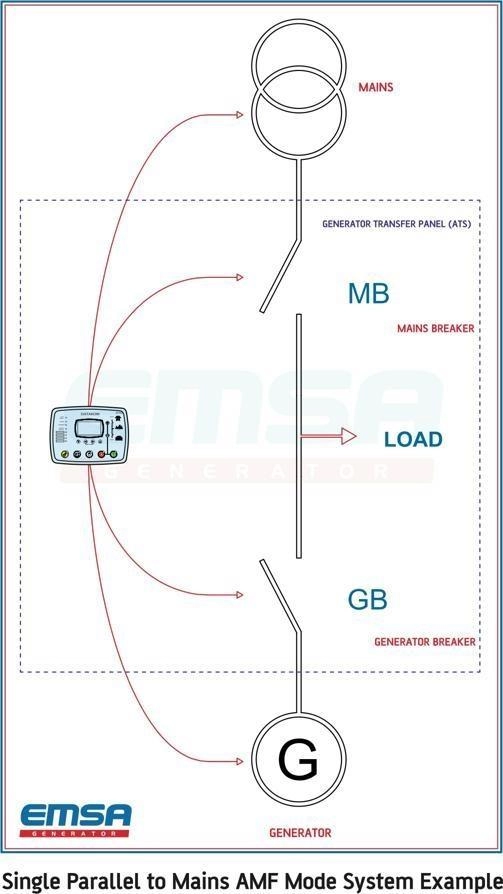
Special Single-Line Systems
These systems can involve multiple grid transformers, multiple generators, inter-generator coupling connections, inter-load coupling connections, and step-up transformers. Operational scenarios are generally tailored based on field conditions and load requirements.
Depending on the operational scenario and customer requirements, PLC, HMI (operator panel), and SCADA systems can be included in the project.
